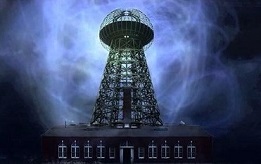In fact Vasile, if you look at the circuit provide by Fighter,

these are two coils in phase opposition that are pulsed which produces a parametric resonance between these two coils. In my case, measured in phase opposition, I have a measured with an inductance meter 74 uh (microhenries) for total of the two coils in my case.
As for the maximum current, it is determined by the duty cycle, the curve obtained is characteristic of this type of pulsed circuit. If you go over a certain limit, the fuses will burn.
Wikipedia shows a nice picture that represents the characteristics of a similar circuit well, you can see the same voltage characteristics versus current waveforms at on and off. Same i get for current in red triangle

Try this: As I drew on the diagram, If you place a capacitor of 1uf not polarized in parallel with the lamp you will have a better luminosity of the lamp.
Jagau
What we consider to be empty space is merely a manifestation of unawakened matter. N.T.








